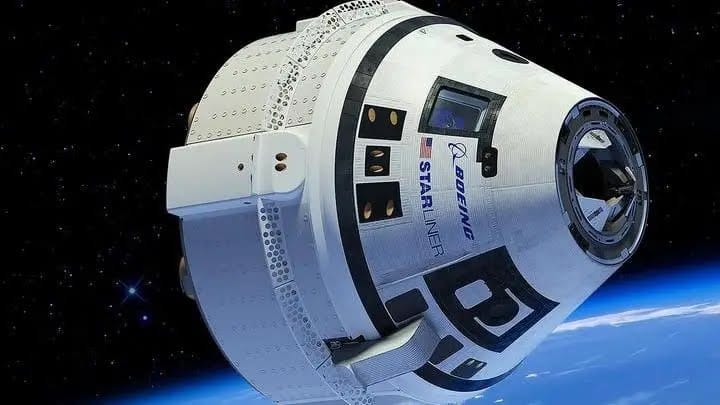NASA has officially announced that Boeing’s troubled Starliner spacecraft will make its return journey from the International Space Station (ISS) uncrewed, aiming to touch down in New Mexico’s White Sands Space Harbor on Friday, September 6, 2024. This decision comes after several delays and technical challenges that have plagued the spacecraft since its June 5 launch, marking yet another setback for Boeing’s ambitious space program.
The Decision to Go Uncrewed
The Starliner was originally launched as part of its first crewed test flight under NASA’s Commercial Crew Program, a public-private partnership designed to ferry astronauts to the ISS. Astronauts Butch Wilmore and Sunita “Suni” Williams, who were on board the spacecraft, were scheduled to return with it to Earth in early July. However, a series of technical issues, including multiple helium leaks and problems with the propulsion system, forced NASA to delay their return and ultimately opt for an uncrewed descent.
NASA made this decision after an agency-wide review of the risks associated with bringing the crew back on the Starliner. Concerns about the spacecraft’s reaction control system (RCS) thrusters, which control its maneuverability, played a significant role in the decision. The thrusters had shown signs of failure shortly after the spacecraft entered orbit, and although subsequent tests indicated some improvement, NASA engineers remained concerned about their reliability during the descent back to Earth.
“There was just too much uncertainty in the prediction of the thrusters,” said Steve Stich, program manager for NASA’s Commercial Crew Program, at a press conference on August 24, 2024. This sentiment was echoed by other NASA officials, who stressed that the safety of the crew was their top priority. Boeing also supported the decision, stating that they are preparing the spacecraft for a “safe and successful uncrewed return.”
What Happened During the Mission?
The Starliner’s mission was initially planned as a short-duration test flight, expected to last only eight days. However, it quickly turned into a three-month ordeal after a series of problems emerged. Five helium leaks were detected during the spacecraft’s journey to the ISS, along with issues related to the RCS thrusters. These problems required extensive troubleshooting from engineers on the ground, which delayed the return trip by more than two months.
In addition to the propulsion issues, NASA and Boeing faced challenges with the spacecraft’s software systems. Previous uncrewed test flights had already revealed vulnerabilities in Starliner’s software, prompting Boeing to spend over $1.5 billion on redesigns and fixes. Despite these efforts, the problems persisted, raising questions about the spacecraft’s readiness for crewed missions.
Boeing and NASA had hoped that this mission would pave the way for the Starliner to be certified for regular crewed flights to the ISS. However, the numerous setbacks have cast doubt on this timeline. Even if the uncrewed return goes smoothly, NASA will still need to assess whether the spacecraft is fit for future human spaceflight, a process that could further delay its certification.
The Road Ahead for Boeing and NASA

The upcoming return of the Starliner marks a crucial moment for both Boeing and NASA. The spacecraft’s performance during its descent will be closely monitored, as it could determine the future of Boeing’s involvement in the Commercial Crew Program. If Starliner fails to meet expectations, it could lead to further delays or even the cancellation of the program.
For Boeing, the stakes are high. The company has already invested billions into the development of the Starliner, and any additional setbacks could have severe financial implications. The company has been under increasing pressure to deliver a spacecraft that meets NASA’s stringent safety standards, especially as SpaceX’s Crew Dragon continues to perform well in its ISS missions.
NASA, on the other hand, is keen to maintain a diversified approach to its crewed spaceflight operations. The agency has long emphasized the importance of having multiple providers for ISS missions to ensure reliability and reduce dependency on a single contractor. The success of the Starliner program is therefore critical not only for Boeing but also for NASA’s broader goals in human space exploration.
In the meantime, Wilmore and Williams, who have been aboard the ISS since June, will now return to Earth aboard a SpaceX Crew Dragon capsule, with their departure scheduled for no earlier than February 2025. NASA has already begun preparing for this mission, which will see the astronauts return alongside members of the ISS’s Crew-9.
The decision to bring the Starliner back without its crew highlights the challenges and risks associated with space travel, particularly as NASA and its partners push the boundaries of human space exploration. As the Starliner prepares for its uncrewed descent next week, all eyes will be on its performance, which will undoubtedly shape the future of Boeing’s space endeavors and NASA’s human spaceflight program.
